Trying to make sure your product, app, website, and/or designs meet the needs of your target audience is of course essential to success. These days, there are loads of tools to help you test your assumptions against your users to see which elements are working and which need refining.
You may have tried ad hoc techniques to store the learnings in the past, but there are now so many UX research tools to help you work efficiently and ensure nothing gets missed along the way.
Read on for our pick of 5 of the best research repositories to help you catapult your designs to the next level.
What Are UX Research Repositories?
They help UX teams by offering a centralized hub for collaborating on projects, as well as storing and analyzing key information.



Why Use a UX Research Repository?
Every research repository is different, so it’s important to find the right one for your needs. However, here are just a few reasons they may help your team succeed!
- They can streamline the research process, meaning the team can be more productive as they can track and learn from research.
- They can help to prove the importance of UX research and planning throughout an organization.
- They can save time by keeping all relevant information and documentation in one place.
- They can boost collaboration by allowing different users to interact, comment, and add feedback via tags and notes.
- They can help you learn from the data. Users can learn from positive and negative feedback and make any changes as needed.
Who Can Use UX Research Repositories?
Anyone looking to carry out, manage, or learn from UX research! Product teams, UX teams, and/or designers either working directly for a client or on behalf of an agency are just some of the groups that can benefit.
Top 5 UX Research Repositories
UX research is so incredibly important, so plenty of research repositories have popped up over the years to simplify the process and ensure nothing gets lost. However, read on for our top 5 picks of online user research tools.
SPONSORED LISTING
1. UserBit
A full-stack qualitative research platform.

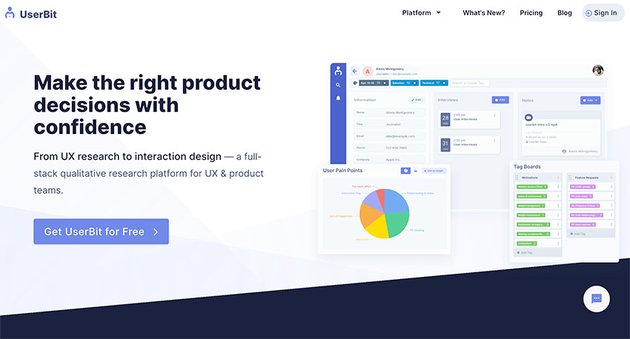

Who’s It For?
UX and product teams wanting to improve their processes.
Great Features:
There are loads—here are just some of the ways UserBit will take your UX research to the next level:
- Flexibility: With remote working on the rise, UserBit helps you collaborate with your team in real-time from anywhere.
- Organization: The platform has everything you need to keep your UX research in one place. Research, user interviews, feedback, transcripts, survey data, as well as stakeholders and participant records are all extremely easy to access (a lot easier than being in multiple spreadsheets or notes).
- Analysis: The tool makes it easy for people throughout the company to learn from the results. You can highlight and tag any part of the research, tag research data based on keywords, and turn data into visual word clouds and affinity diagrams.
- Information Architecture: You can generate personas directly from the research, design an intuitive menu and navigation by discovering your users’ mental model, and produce a visual blueprint for your app or feature.
- Interaction Design: You can visualize the design process by mapping out the user path through apps or features and make journey maps.
- Sharing: The best research combines multiple views, so you can add unlimited viewer accounts, capture findings in presentable cards, and create case study reports to share entire research workflows.
Why We Love It:
- You can tailor your price package around your needs. If you’re managing just one project and are looking for an affordable UX research repository you’re in luck as it’s free—even with an unlimited number of users. If you want to manage unlimited projects it’s $20 per user per month. Check out the UserBit pricing page for more details.
- It’s easy to use, with an intuitive drag and drop user functionality to help you move content around simply. If you’re new to UX research tools, there are also loads of guides you can follow for top tips.
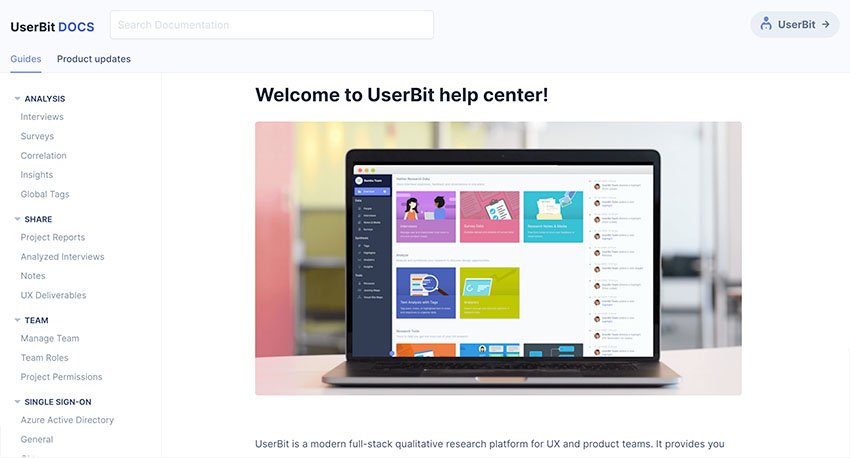
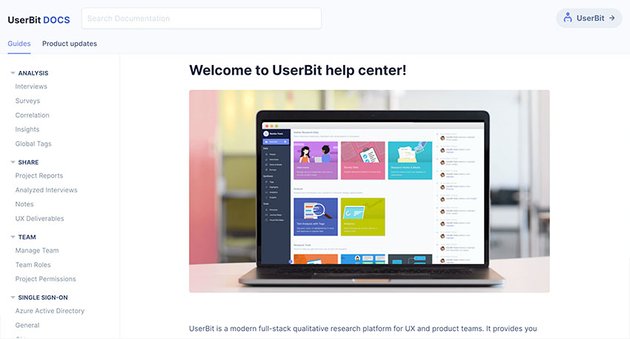
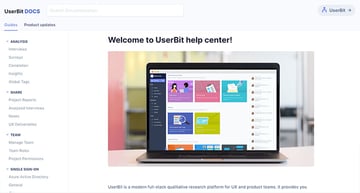
- It’s updated regularly, just take a look at the ‘product updates’ section to see all the latest changes.
2. Usability Hub
A remote user research platform that aims to take the guesswork out of design decisions by validating them with real users.
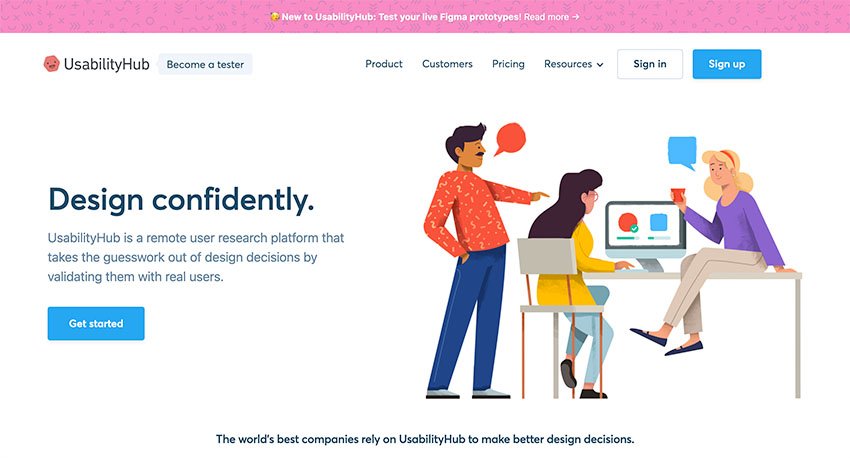

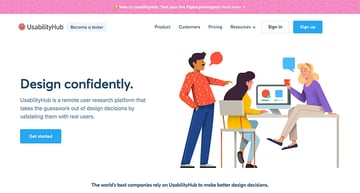
Who’s It For?
Like all user research tools, the platform is great for anyone keen to learn from and make better design decisions by learning from the research. Currently, teams in consumer goods and services, technology and SaaS, and digital and media agencies use UsabilityHub.
Great Features:
Again, this research repository has plenty of features to streamline the process. Here are some of the stand-outs:
- Prototype Testing: You can import your prototype back from Figma and get more powerful and relevant feedback from real users.
- Design Surveys: You can (thankfully!) put an end to internal debates and struggles by asking users questions to validate assumptions.
- Preference Tests: You can share different designs in response to specific briefs to see which ones are preferred by each audience.
- 5 Second Tests: First impressions count! You can work out which messaging works best where and reduce bounce rates by measuring people’s first impressions.
- First Click Tests: You can understand which links work most effectively and see how many people complete tasks to make relevant changes.
Why We Love It:
- 340,000+ users are linked to Usability Hub so you can target your brand’s exact target audience in seconds. Demographic targeting means you can select people by age, location, gender, income, and more.
- Recruiting from the panel starts at $1 per participant with no additional charges, so depending on the size of your audience, it won’t break the bank.
- You can also invite your own customers to take part in tests or integrate them with any participant panel you’re already using,
3. Productboard
A customer-centric product management platform.
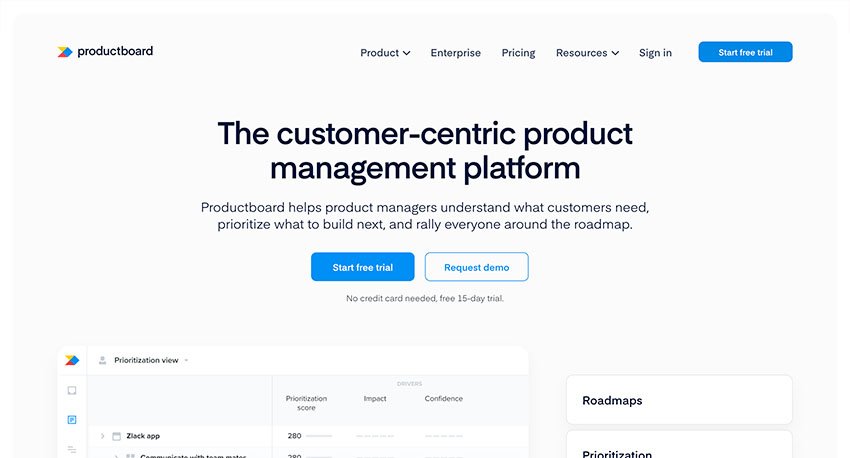


Who’s It For?
For product managers wanting to understand what customers need, prioritize what to build next, and boost collaboration by getting everyone to rally around the roadmap.
Great Features:
- Build Roadmaps: It’s easy for everyone to view and customize product roadmaps. You can also group product features by release, sprint, broad time horizons, or now/next/later timings.
- Prioritization: The tool helps you to work out what needs to happen next based on user insights.
- Collate Feedback: A key feature of user research tools, you can easily capture every product idea, request, and piece of feedback from colleagues and customers in one place.
- Test Ideas and Assumptions: You can add ideas and let users know what’s coming up and what’s already launched.
Why We Love It:
- You can connect to hundreds of systems you already use, i.e. Jira, Salesforce, Microsoft, and Slack.
- It’s popular! More than 5,000 customers already use the tool.
- It’s designed with many different teams in mind, such as Product, Design, Marketing Engineering, and Customer Support, so it can break down silos and foster an environment where everyone works together.
4. Dovetail
Another excellent research repository UX tool! Its tagline is “Where customer research lives”—it’s designed to be intuitive, collaborative, and searchable.
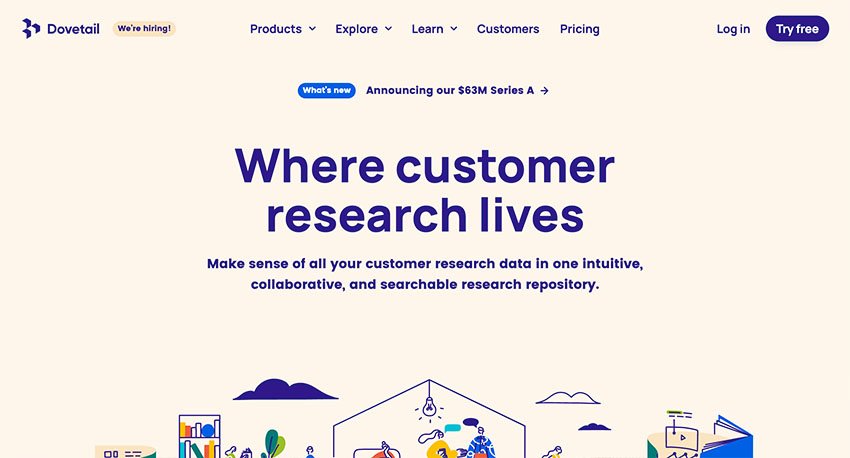


Who’s It For?
Like many of the best user research software tools, it’s for anyone within an organization ready to make the UX research process more efficient. Dovetail is used by thousands of customers ranging from small agencies to universities to Fortune 100 companies.
Great Features:
- Pace: You can turn your raw data into insights in minutes with advanced transcription and tagging.
- Accessibility: Like many of the best online user research tools, you can keep far-reaching research in a single location. It’s easy to search too.
- Tracking: You can find users easily and create profiles, linking people to relevant data and insights to keep track of interactions and learnings.
Why We Love It:
- There’s a great sense of community—you can join 3,000+ others to share knowledge, ask and answer questions, and learn how other users are making the most of Dovetail.
- Pricing is tiered according to 3 different packages, so you can pick whichever works best for you.
- If you find a really important learning after a UX testing phase, you can break recordings into key moments to share with the team.
5. Condens
A research repository UX tool that makes storing, analyzing, and sharing research and data easier and faster.
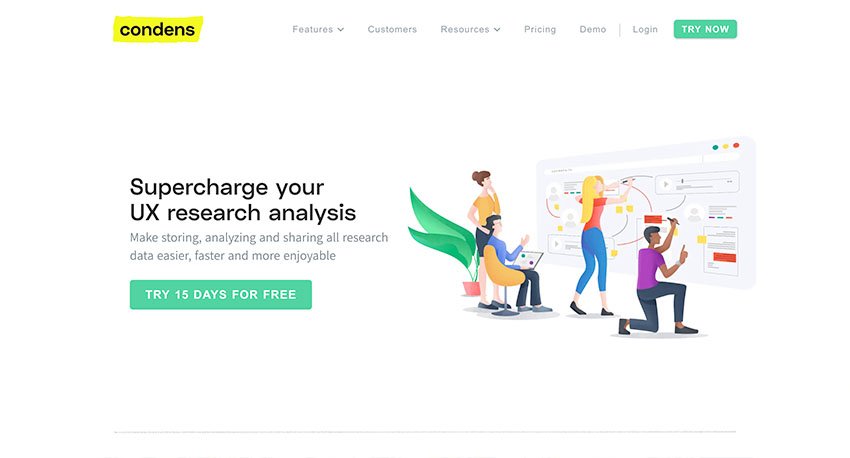
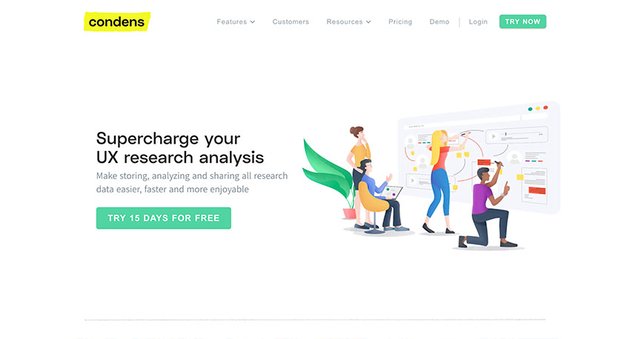
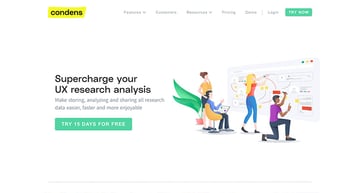
Who’s It For?
Anyone within a team wanting to store, structure, and analyze user research data and share results across the organization.
Great Features:
- Qualitative Data Analysis: Simplify tasks and bring structure to your processes while streamlining the workflow.
- Sharing: It’s all very well carrying out the research, but for it to make an impact it needs to be listened to by the right people. You can share findings with the click of a button.
- UX Research Repository: The more research you carry out, the more you can learn. This tool streamlines the research process and organizes data so it can be valuable for the entire team.
- Automatic Transcription: Like many of the best online user research tools, you can automatically turn interviews into fully time stamped text.
- Integrations: You can integrate the tool into the systems you and your colleagues are already used to—Zoom, Google Drive, Teams, and more.
Why We Love It:
- You can share findings easily—instead of sending huge files, your audience can see the results in the browser.
- It’s easy to use so anyone with any level of technical know-how can get to grips with it quickly.
- It’s highly visual—especially if you have a huge amount of research to pore over, the tool makes sense of qualitative data and structures it clearly.
Over to You!
As you can see, there are plenty of tools out there that can help you ace your UX research and ensure your product and/or designs meet the needs of your consumers.
Which research repository is your favorite? Or is there one you think should be on the list? Let us know!